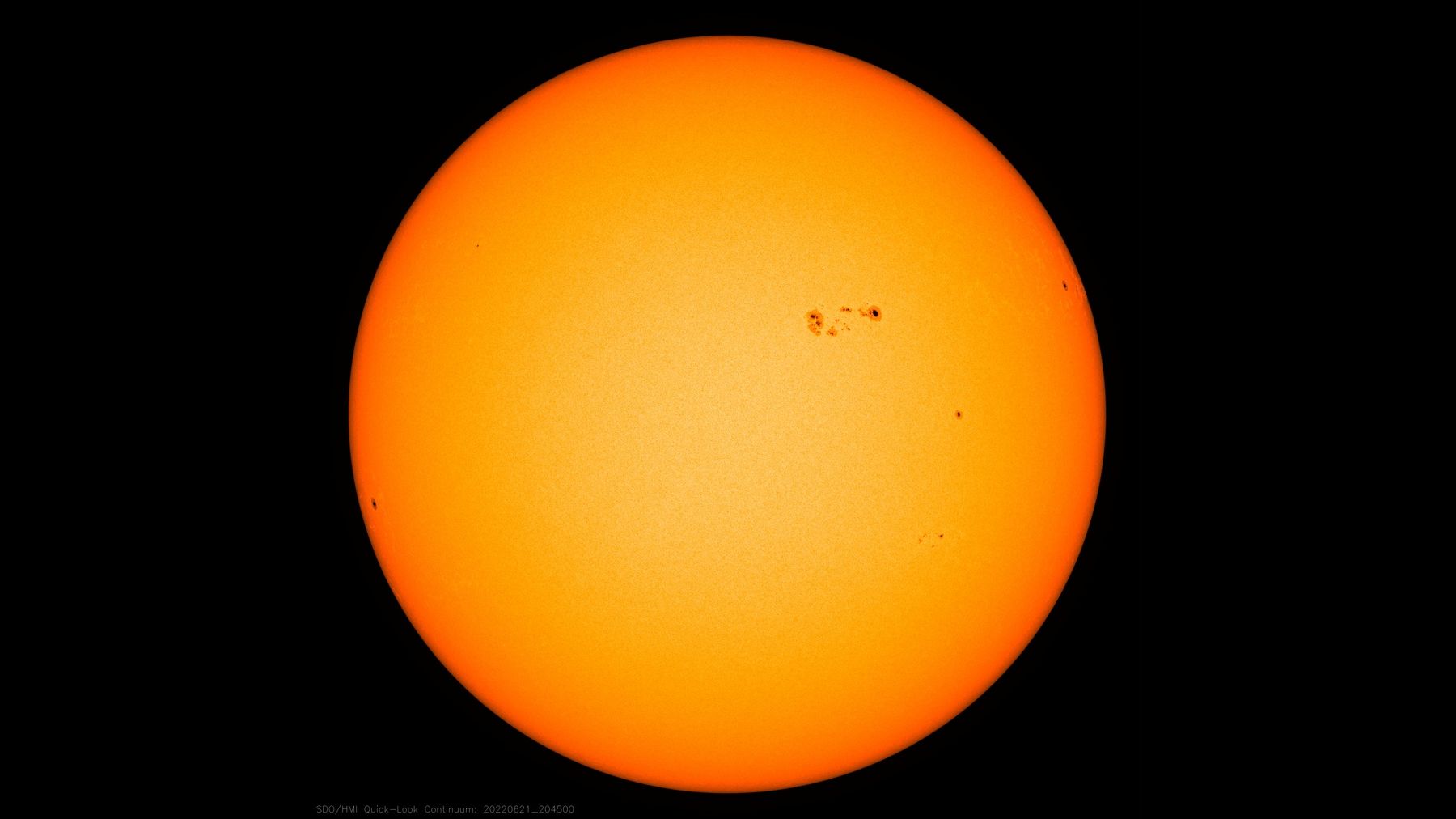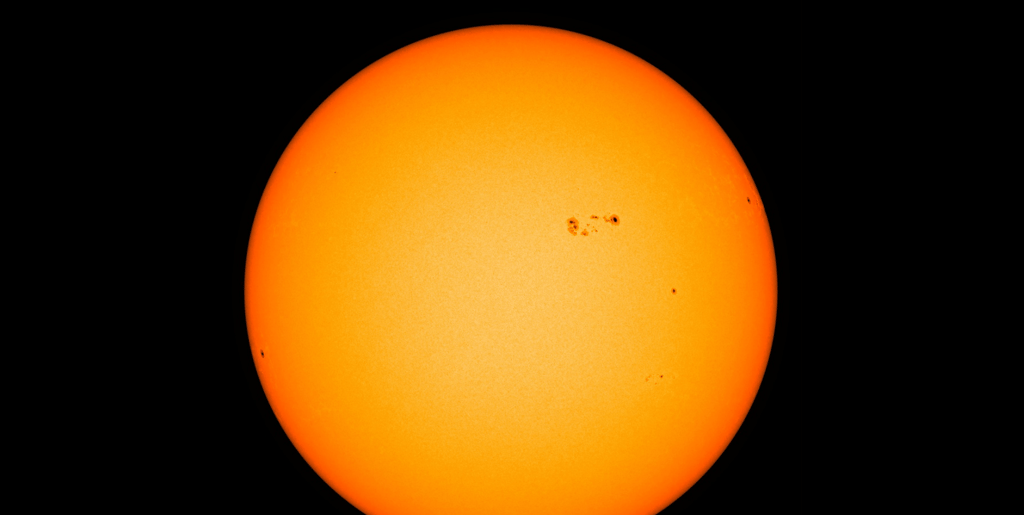
Four times the size of Earth, or a massive sunspot, may be seen crossing the surface of the Sun, and according to astronomers, it is large enough to be viewed without the need for a telescope as long as one is adequately protected. With eclipse glasses that have lenses made to filter out the sun’s damaging UV and infrared radiation, it is possible to observe the sunspot, known as AR3310, without using a magnifying glass. “A giant sunspot is crossing the sun’s disk, and I could see it clearly with solar glasses. Caution! It would be best if you used eclipse glasses or solar filters to protect your eyes,” South Korean astronomer Bum-Suk Yeom told spaceweather.com.
Sunspots are places from which solar flares are released because of their active magnetic fields
According to reports, wildfires in Canada are also producing a natural smoke filter that allows skywatchers in portions of North America, such as New Jersey, New York, and Pennsylvania, to view the sunspot. The evening sun is anticipated to be dimmed by the wildfire’s thick smoke, revealing the sunspot that would normally be hidden by glare. Sunspots are transient occurrences that appear as black spots on the Sun’s surface. They are places where the magnetic fields of the Sun are quite active. These regions of the Sun have powerful magnetic fields that keep part of the heat from the sun’s core from reaching the atmosphere. This results in a cooler and darker-looking Sun’s surface in those areas.
Sunspots are places from which solar flares are released because of their active magnetic fields. Solar flares, sometimes called coronal mass ejections, are powerful energy explosions from the Sun’s erratic atmosphere. These solar outbursts can cause radio communication blackouts on Earth, issues with electric power grids and navigation systems, and even pose a risk to astronauts and spacecraft due to the charged particles they release into space. The sunspot AR3310 has been relatively quiet for the previous 48 hours. Still, according to the US National Oceanic and Atmospheric Administration (NOAA), there is a 20% chance it could release a potent X-class flare when it is facing Earth. “The sunspot has an unstable ‘beta-gamma-delta’ magnetic field that harbors energy for strong X-class solar flares,” spaceweather.com noted.
